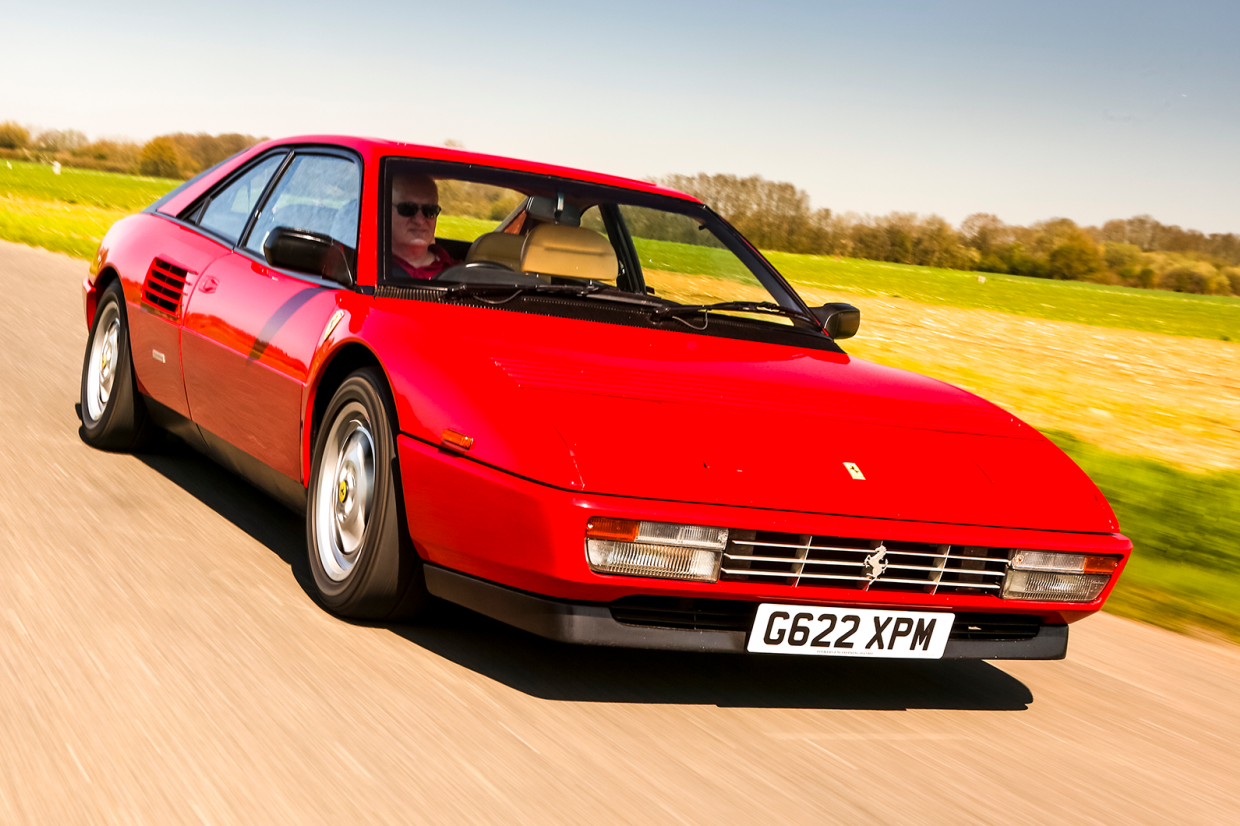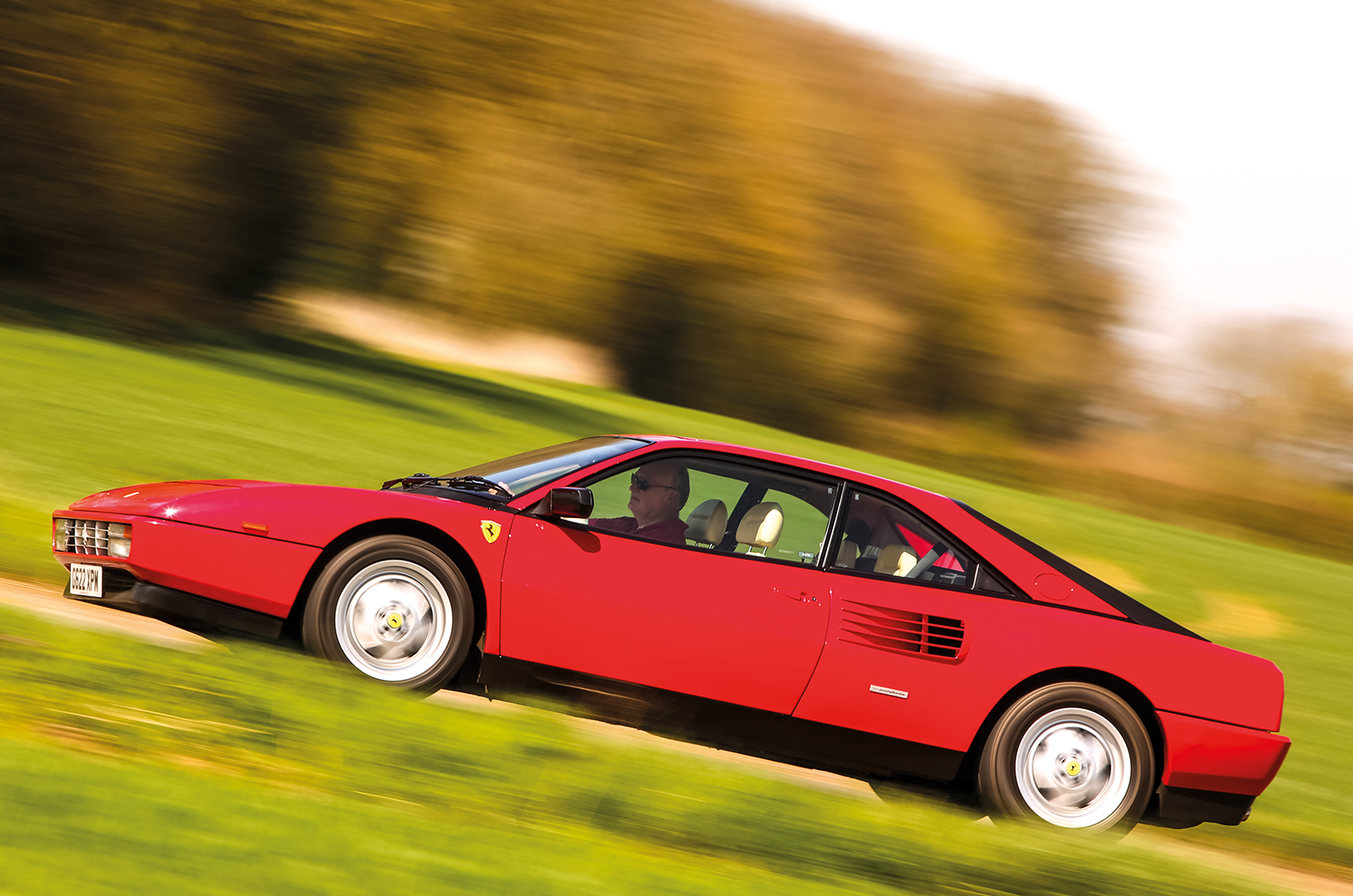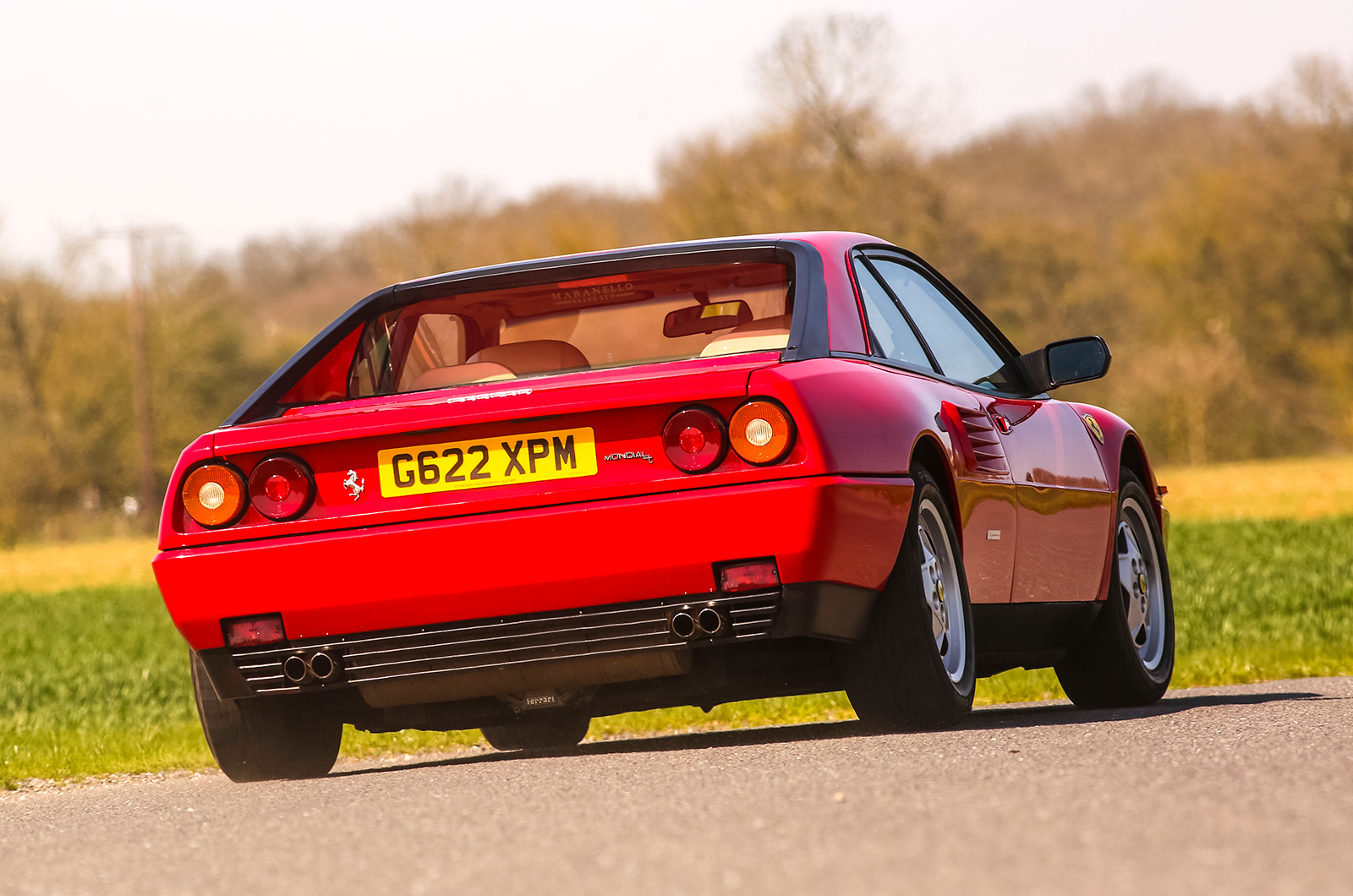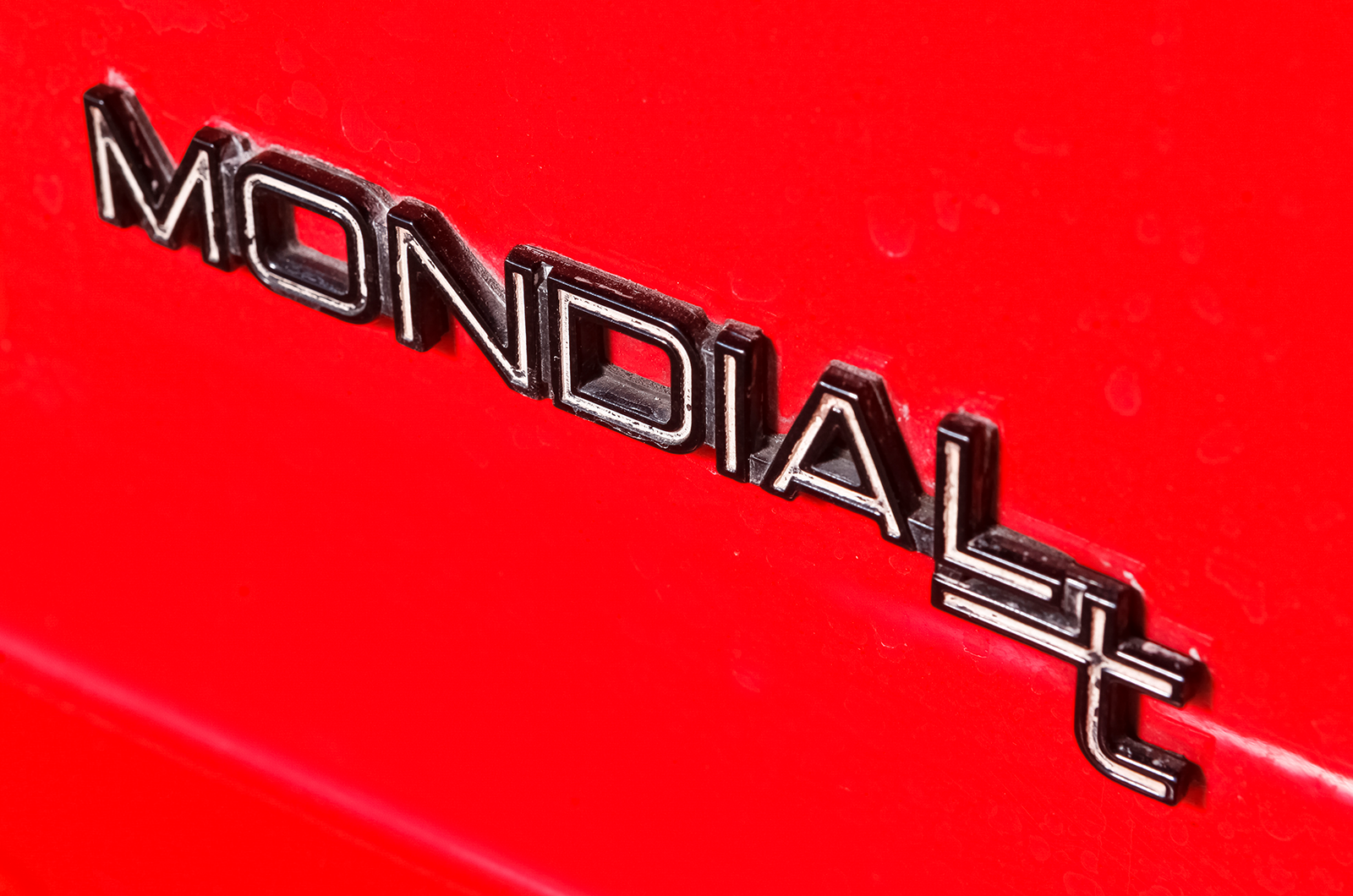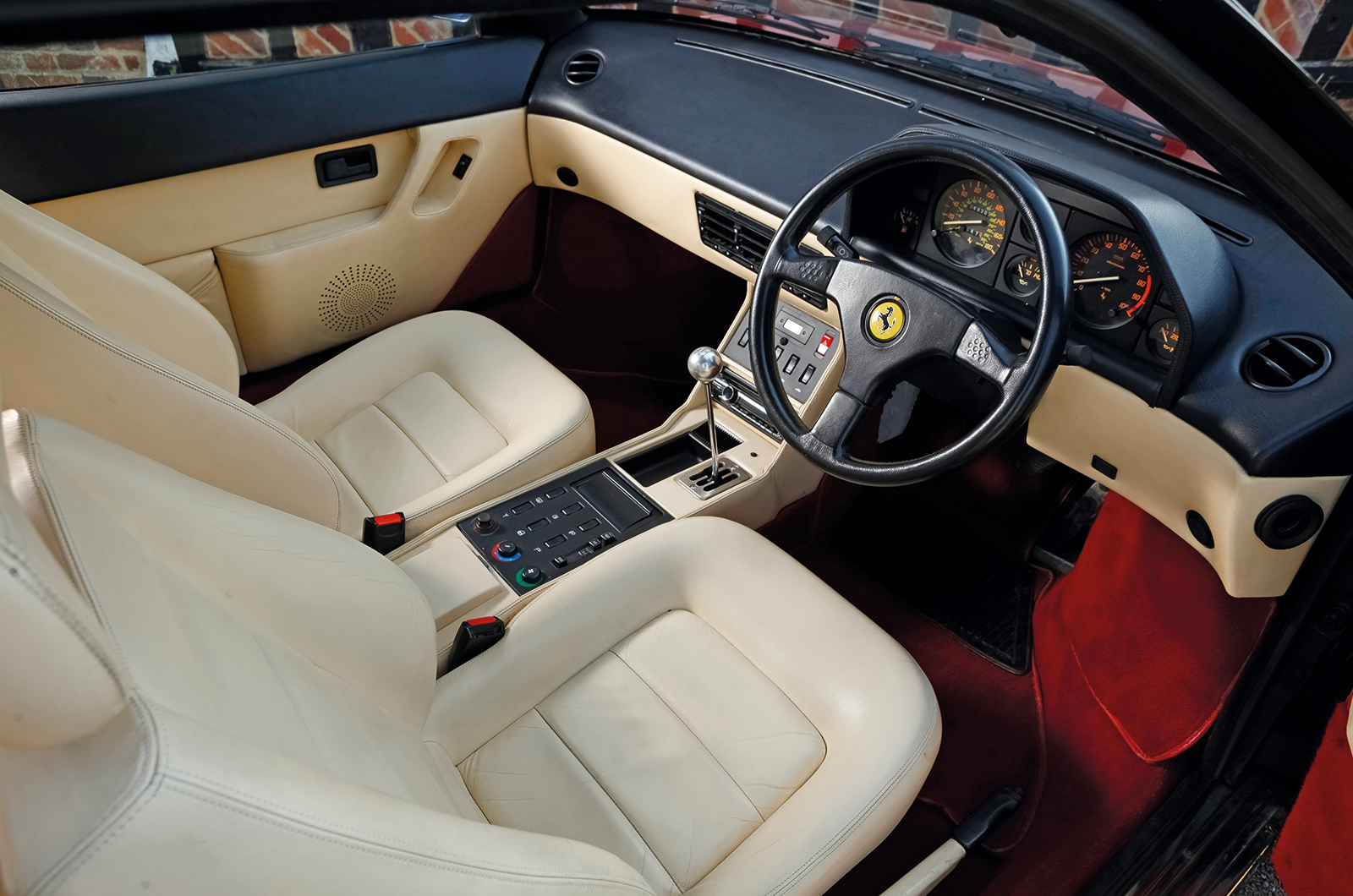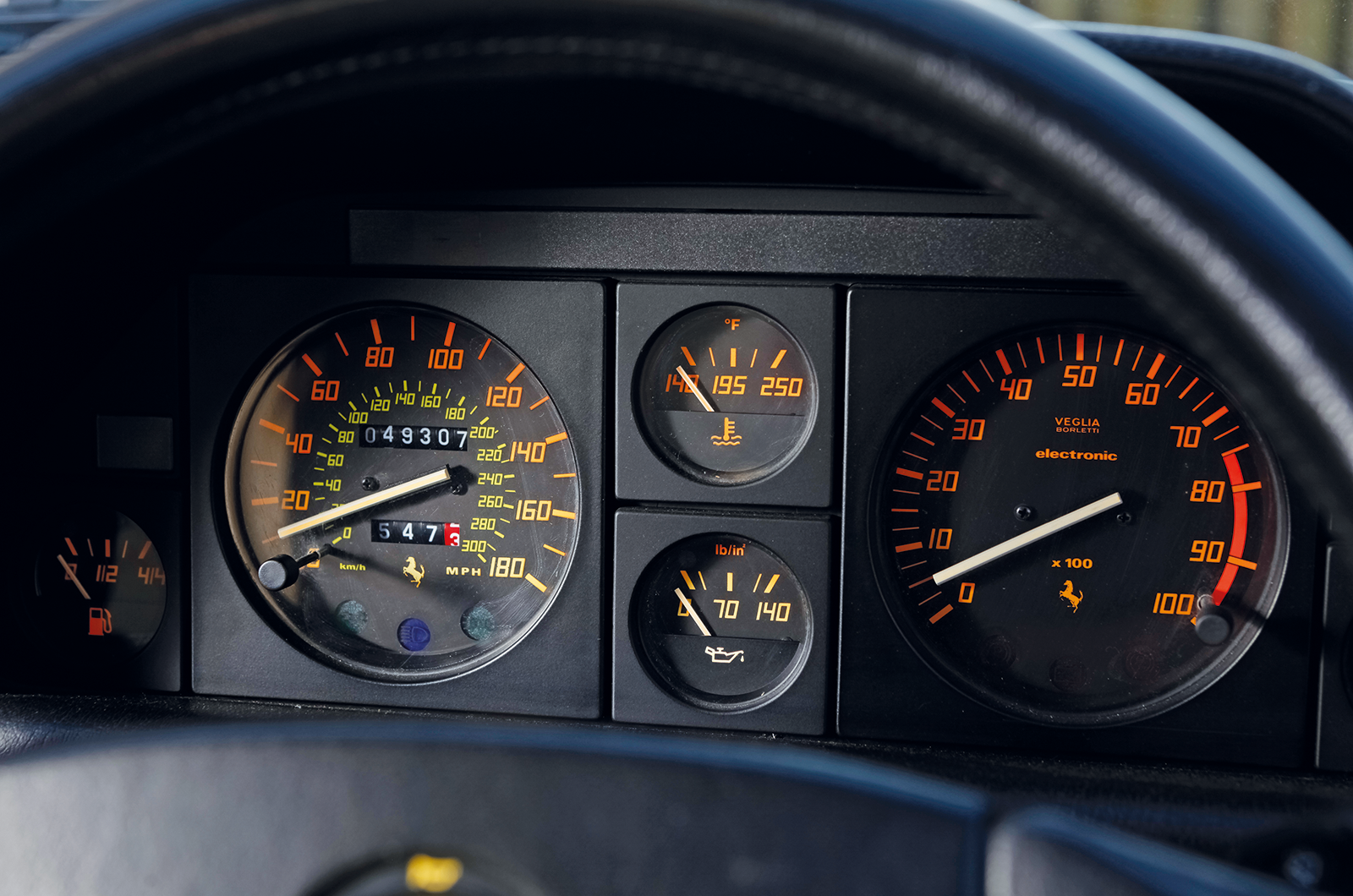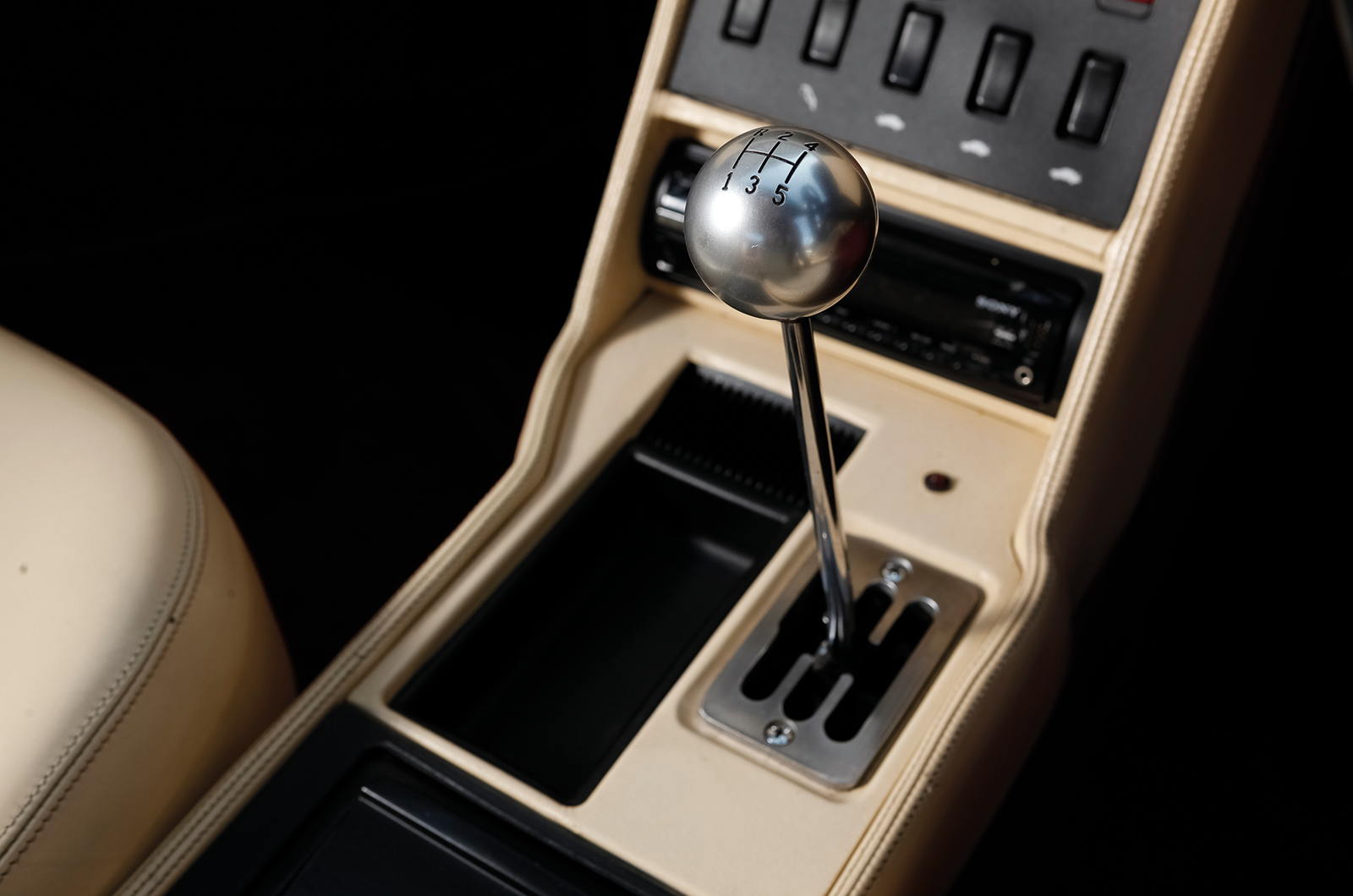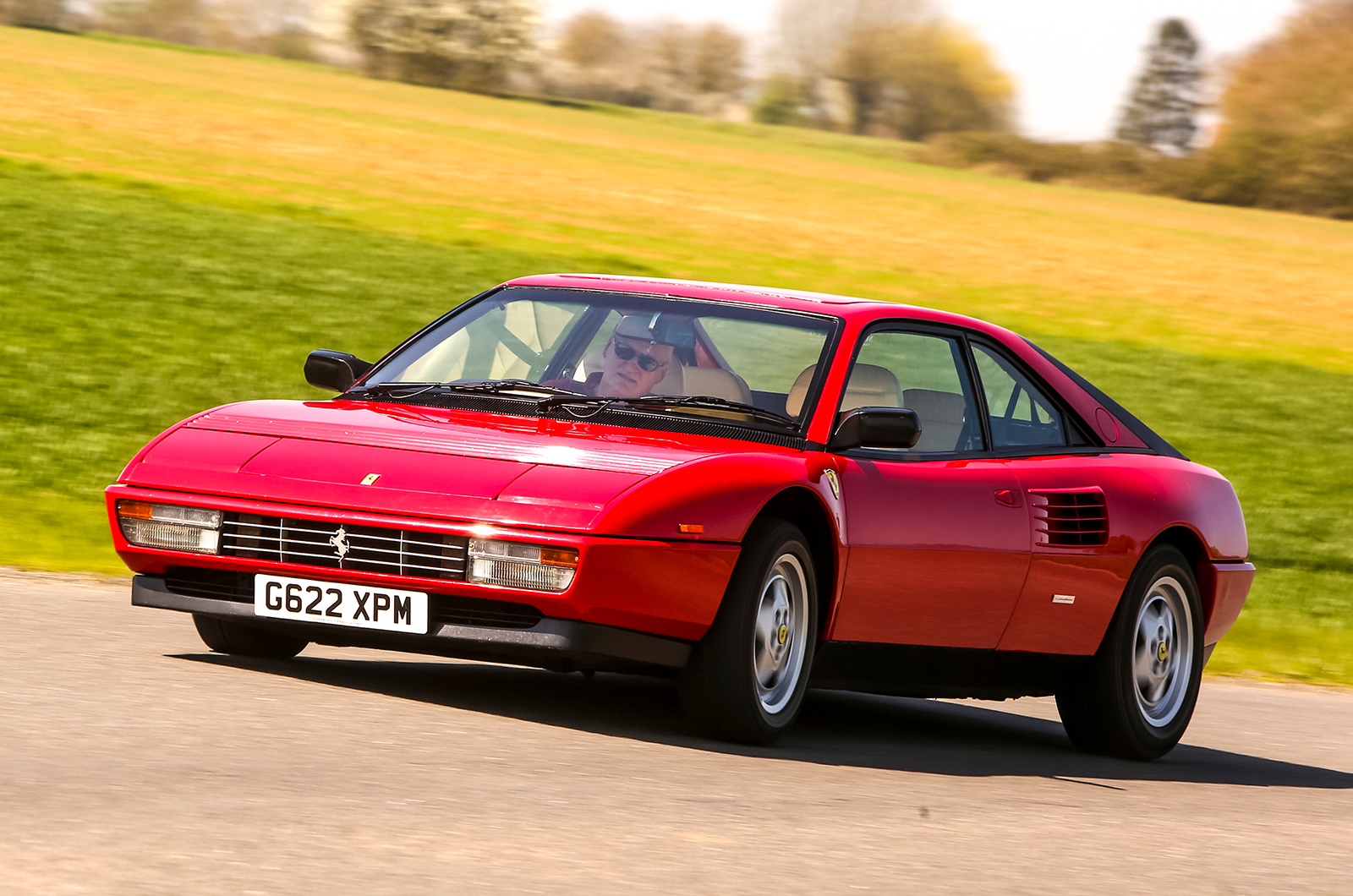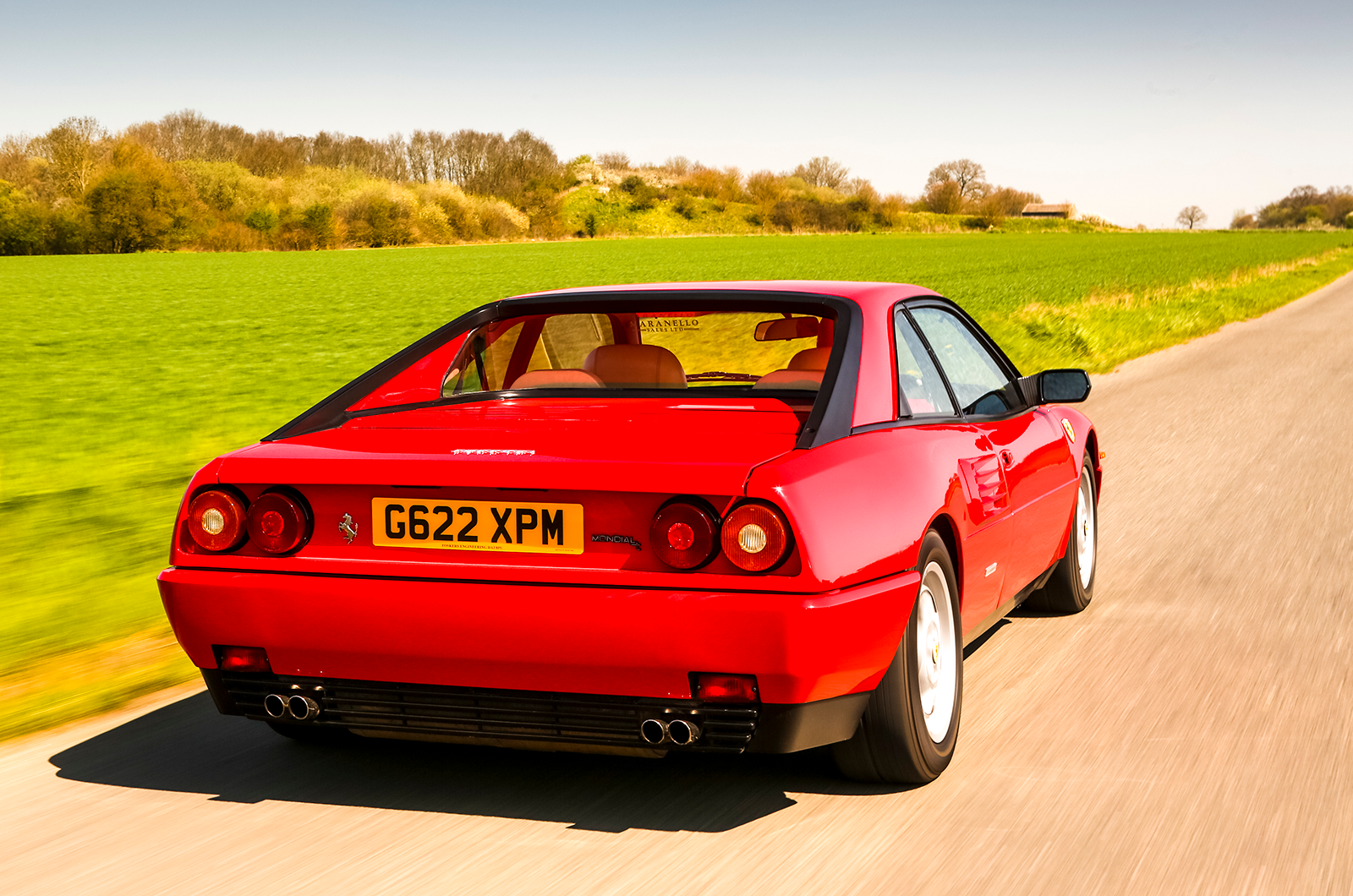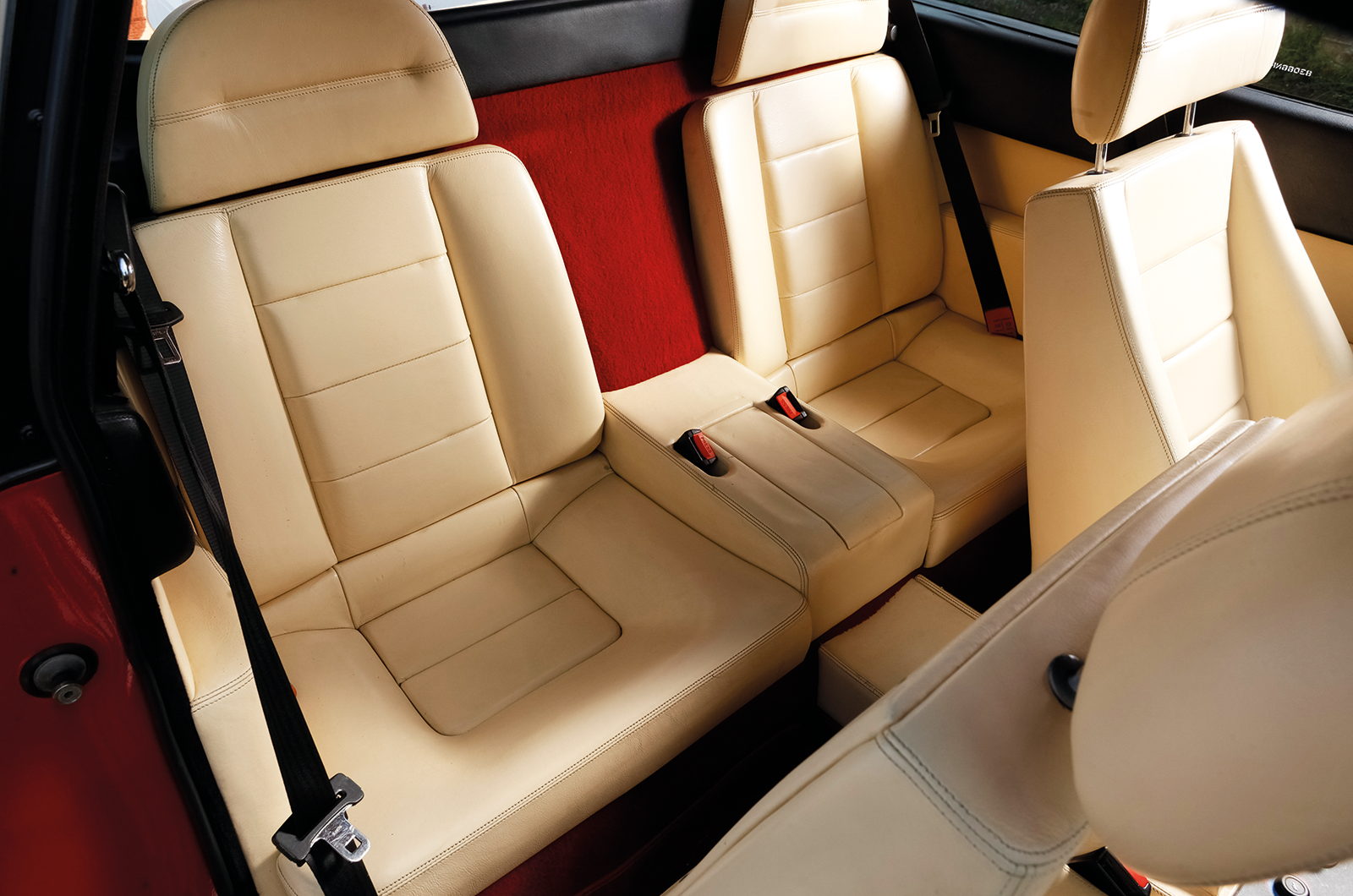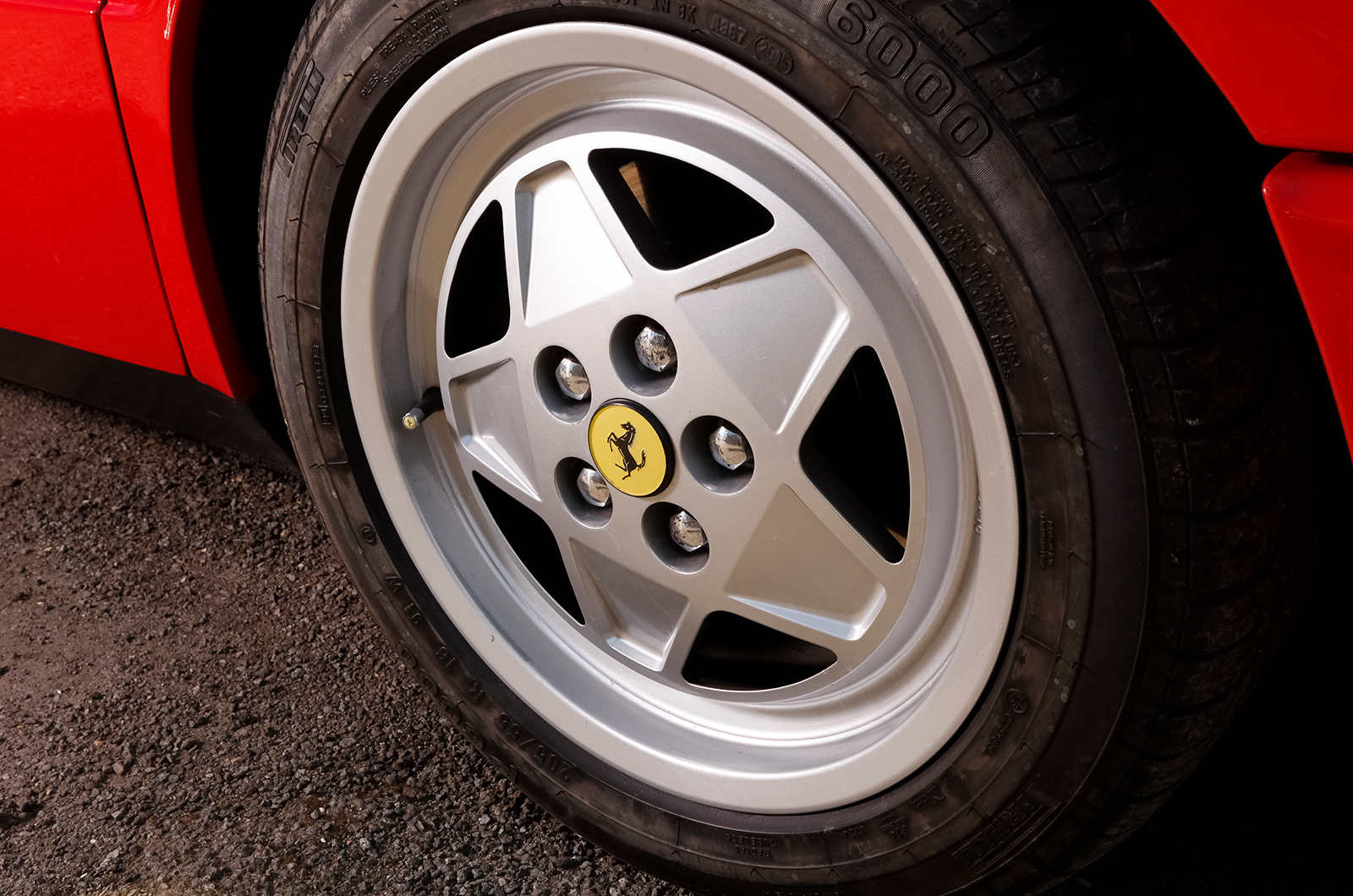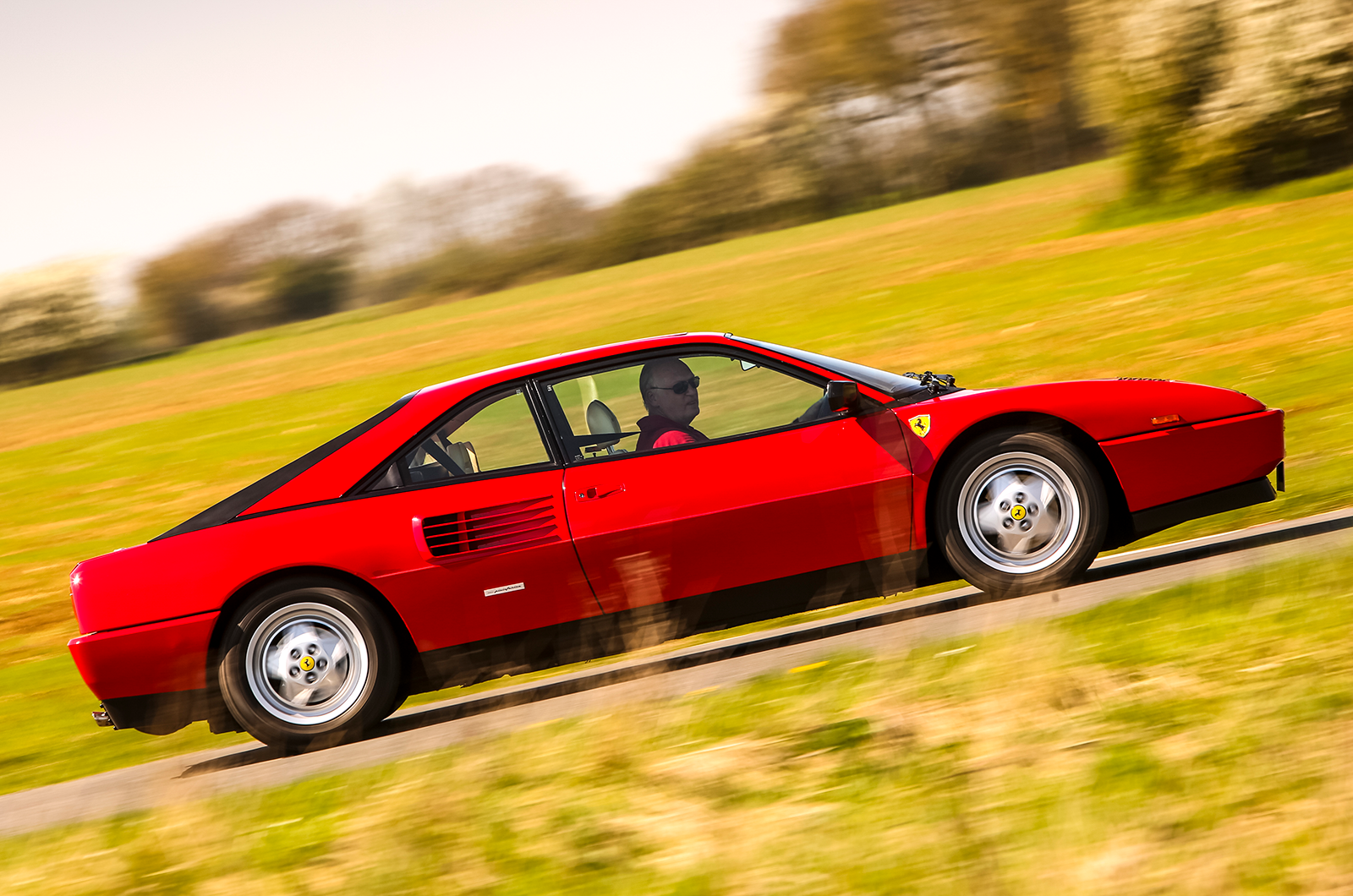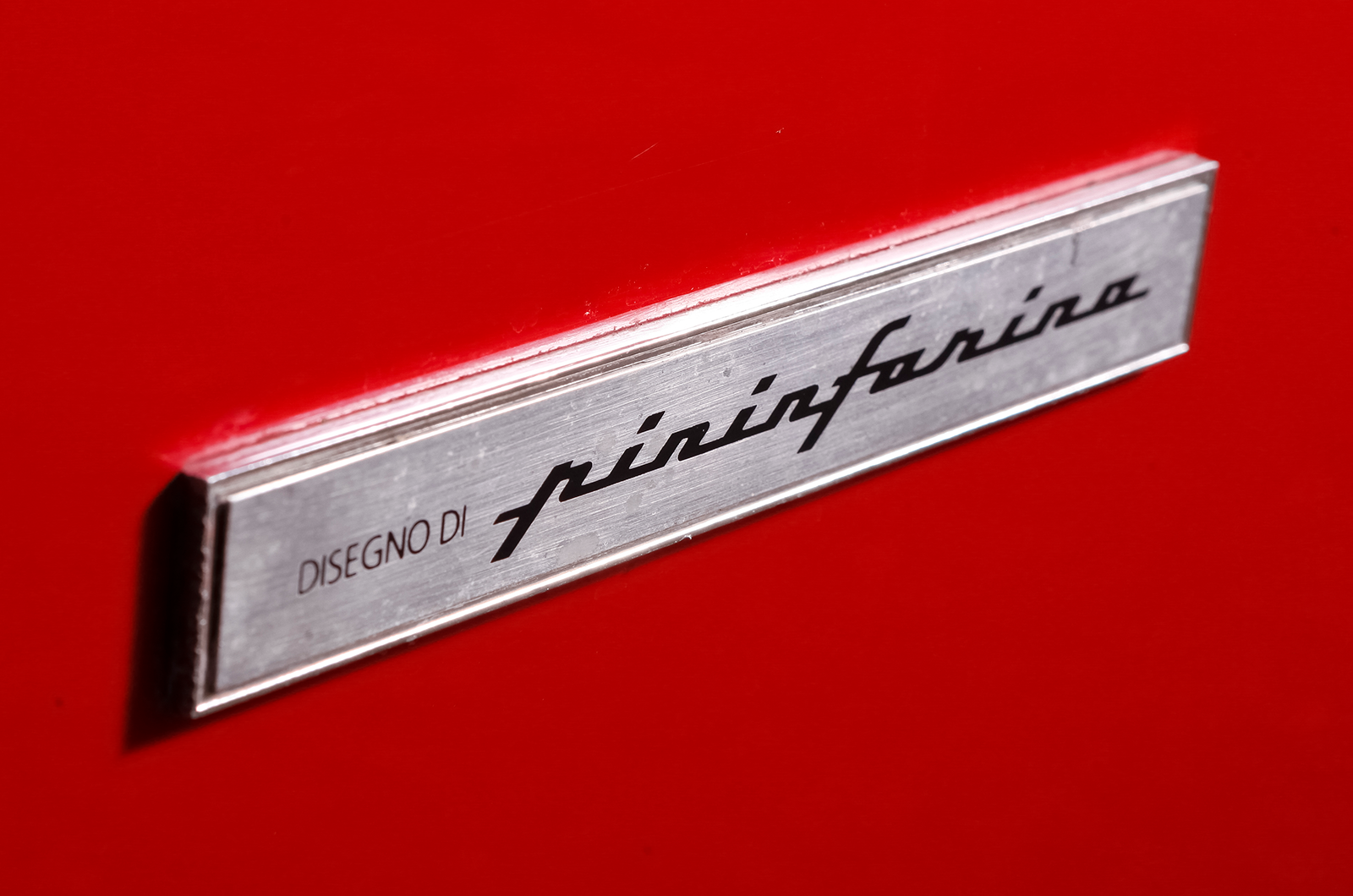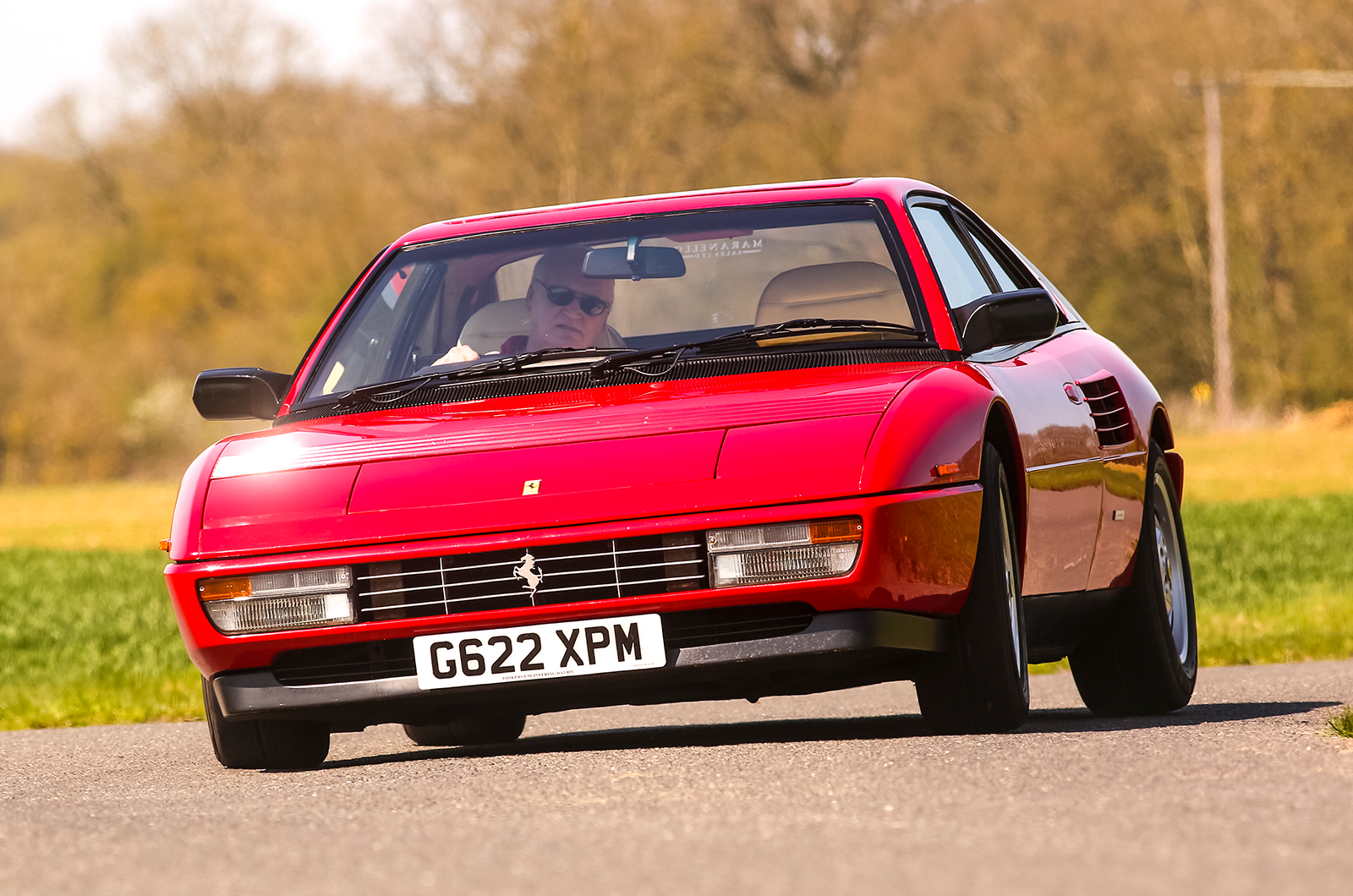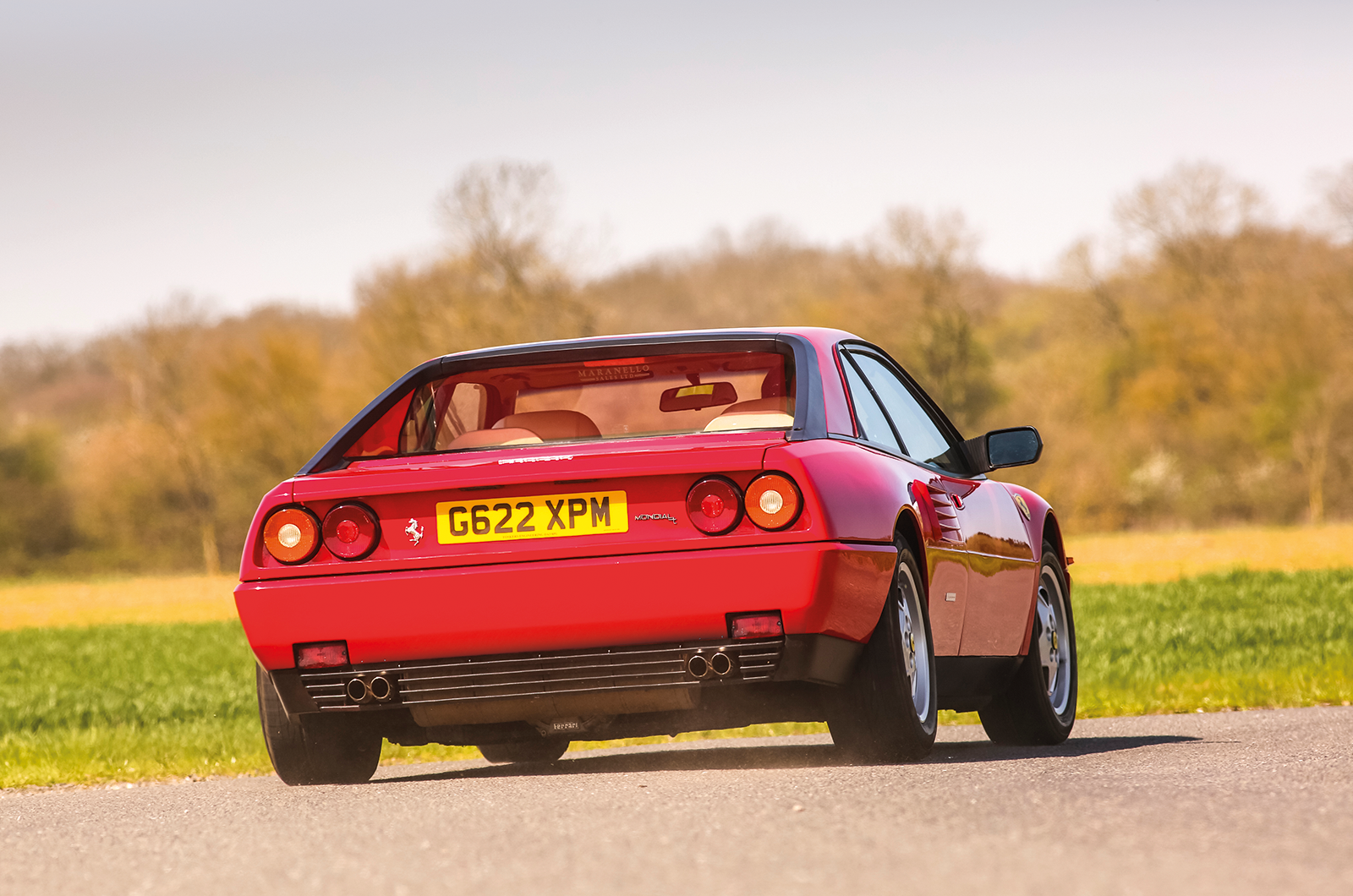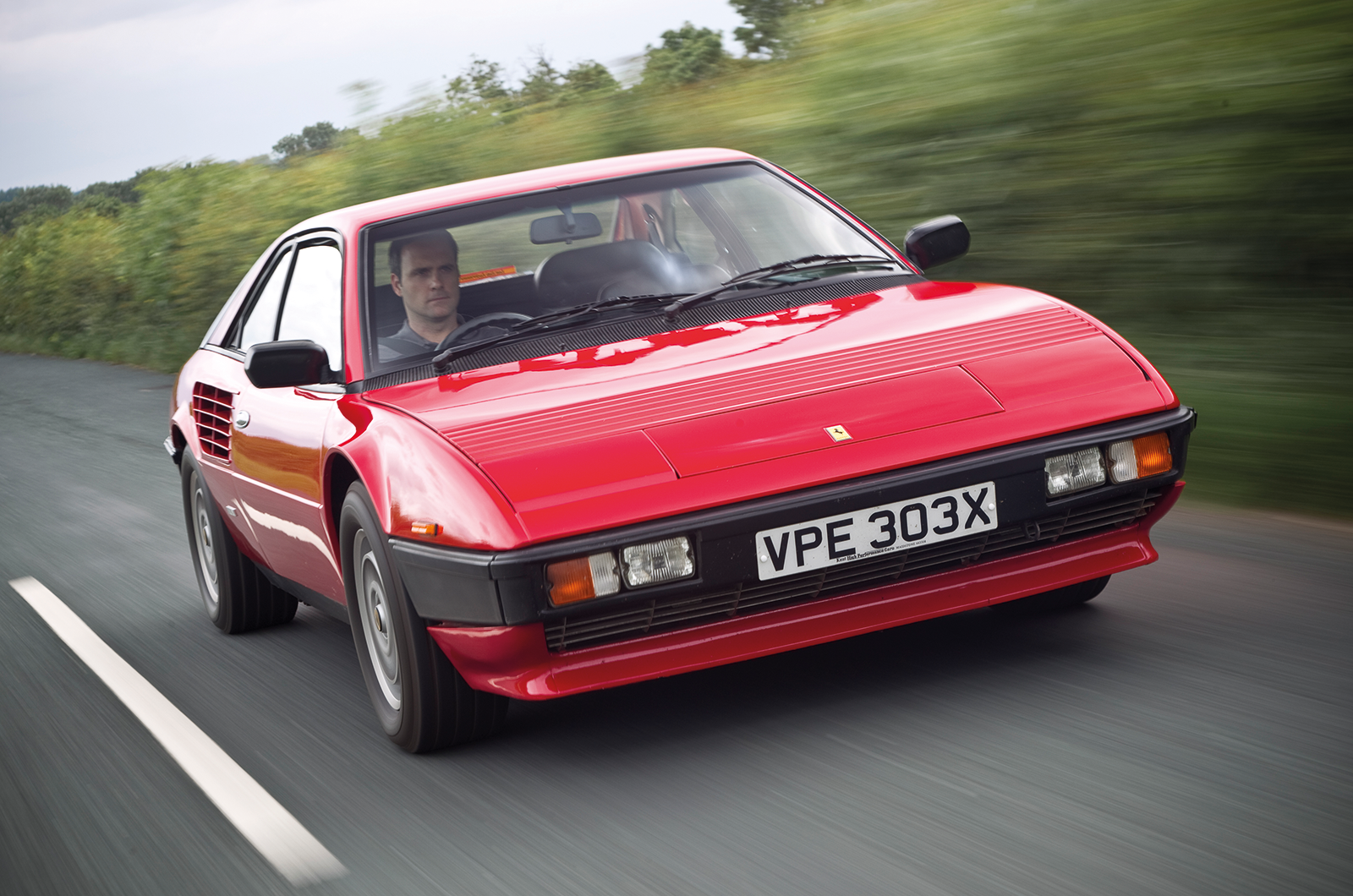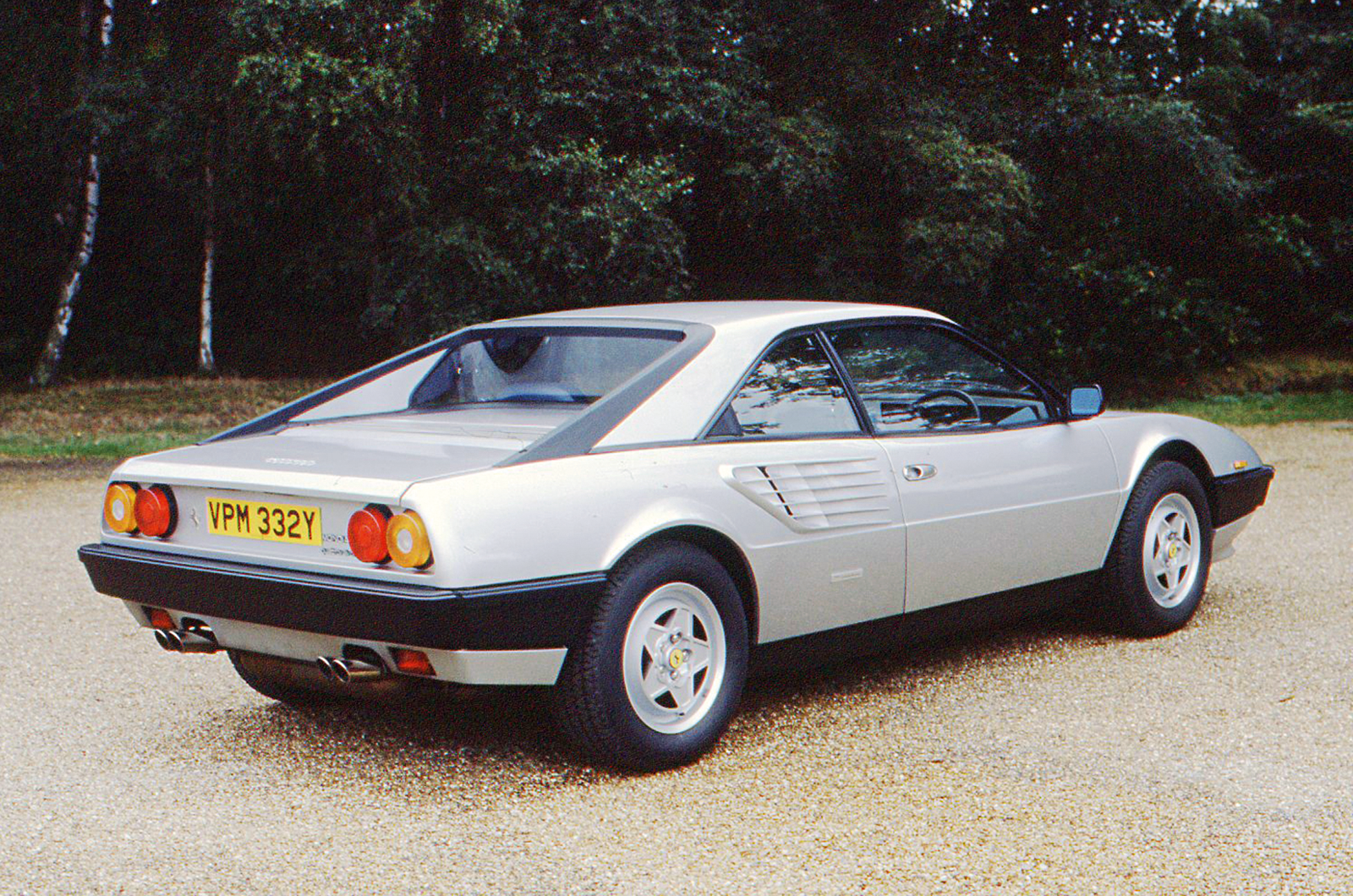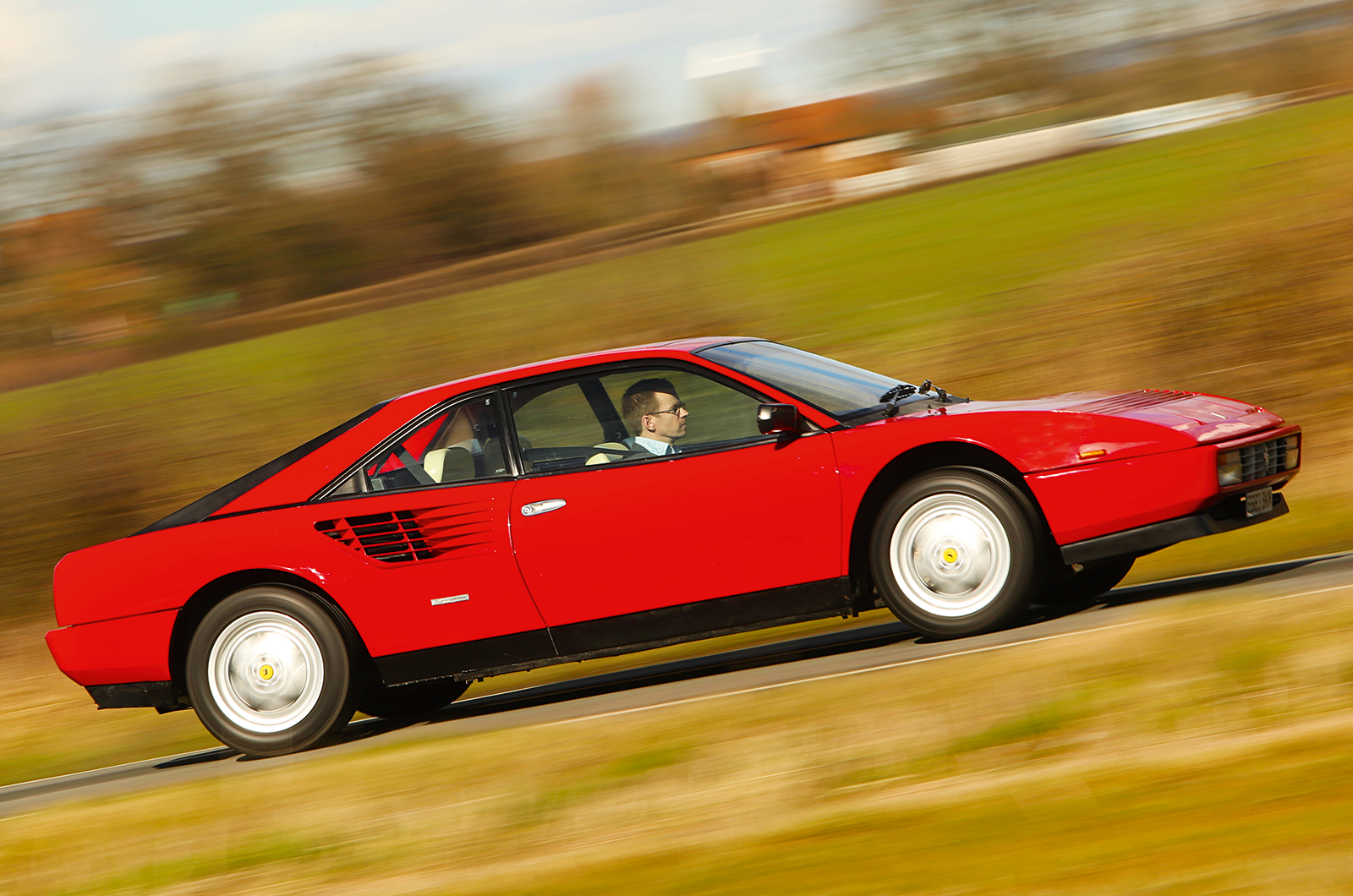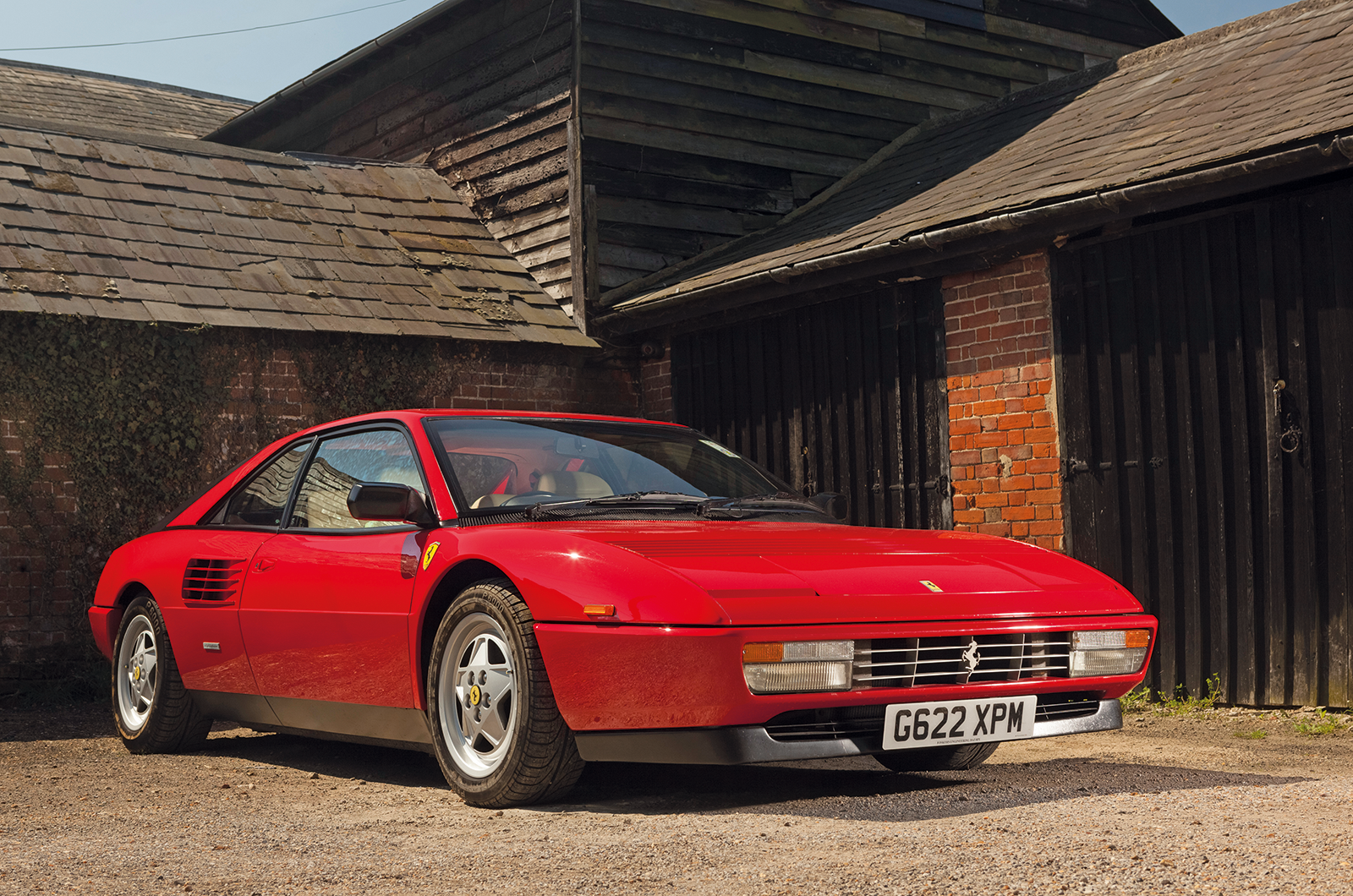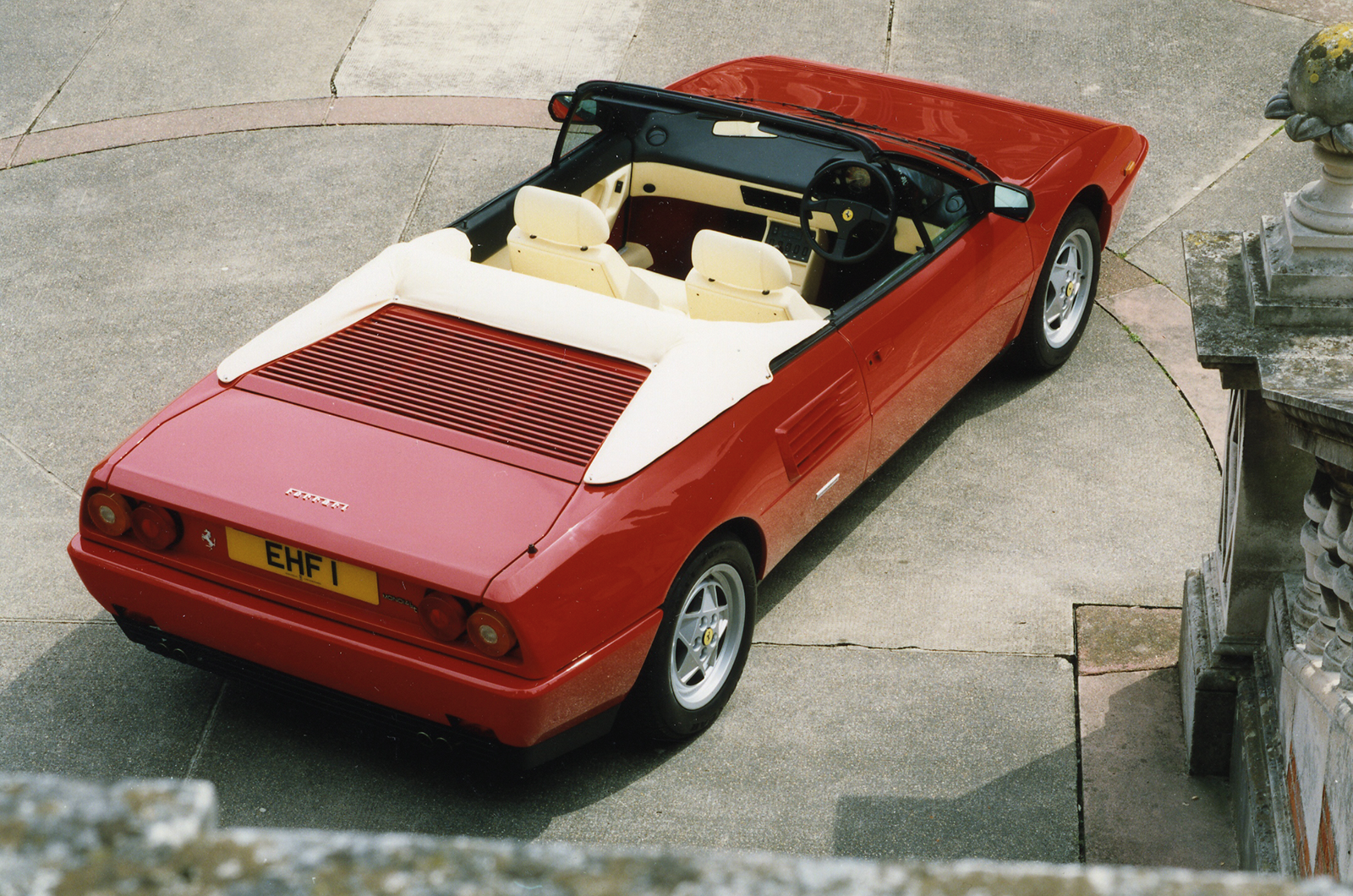Pottering in traffic, it doesn’t have huge lowdown torque but the power delivery is smooth, the ride civilised (Tuthill keeps the adjustable dampers in ‘comfort’ mode) and the sounds from engine and ’box sufficient to make the experience special, trailing away in the wind at speed.
The low gears in the classic open gate prove difficult to find when the oil is cold, but otherwise the Mondial is a simple, forgiving car with lunging but not brutal acceleration and tasty throttle response.
Ferrari and Pininfarina is a familiar classic combination
The smooth, firm accelerator pedal is perfectly matched to the solidly progressive brake.
It makes a perfect fulcrum for a bit of heel-and-toe action when the testosterone begins to flow and you start to get a taste for the fast, metallic and precise click-clack-clickclack action of the gears.
The ratios are closely stacked, all the better to maintain the bristle of excitement from a glorious engine that starts pulling really hard from 3500rpm, whipping round to 7000rpm in that sonorous blur of valve thrash and quadraphonic camshaft whine that always thrills, no matter how many times you hear it.
Power steering, adjustable suspension and ABS were just some of the updates that came with the ‘t’
With its loving owner’s face a mask of friendly but silent apprehension in the passenger seat, I will not pretend that I sampled the limits of the Mondial’s chassis behaviour or found out for myself that the longer wheelbase really does make the handling more forgiving than its two-seater siblings.
What I can say is that the Mondial is a car with capabilities way beyond my talents, and probably yours; cornering is mainly flat with a hint of roll in tight turns and always grip to spare at both ends.
It’s consummately relaxed and stable, immune to clumsiness and indecision, with a smooth and communicative feel that flatters the timid but rewards those who want to engage with it.
The Mondial remains a fine-looking classic Ferrari
The world of Ferrari is so much about status and rarity and my-car’s-worth-more-than-yours one-upmanship that it is easy to see how the self-effacing and maybe slightly too practical Mondial has tended to be treated a bit dismissively.
I think a good one, perhaps (for me) in any colour but red, would make a lovely car.
In a world where modern Ferraris seem to be getting uglier and more offensive on a daily basis, the Mondial is looking better all the time; prices will rise, and probably are already.
Choose carefully, drive proudly, but most of all buy a Mondial because you like it, not just because you have to own a Ferrari at any price. That always looks a bit sad.
Images: Tony Baker
Thanks to Italia Autosport; The Ferrari Owners’ Club of GB
This was originally in our August 2018 magazine; all information was correct at the date of original publication
Ferrari Mondial family tree, 1980-1993
Mondial 8 – 1980-’82
Launched at Geneva in 1980, but production didn’t begin until 1981. Just 703 cars built, including 76 right-hookers for the UK, with Michelin TRX tyres, black bumpers and 214bhp for Europe.
The V8 has Digiplex ignition with Bosch K-Jetronic injection
Mondial QV – 1982-’85
New quattrovalvole (four valves per cylinder) F105A engine using Nimonic-alloy valve technology – a first in a production car – and giving 244bhp.
Styling was largely unchanged, bar a new centre-console design. Just 216 of the 1145 cars built were for the UK
Mondial 3.2 – 1985-’88
Colour-coded bumpers, a revised nose and convex five-spoke alloys gave a fresh look, and the engine was bored and stroked to 3185cc, with Marelli Multiplex ignition.
That meant 270bhp for the 987 cars made, including 91 in right-hand drive for the UK
Mondial t – 1988-’93
The final version got the 3.4-litre, 300bhp dry-sump V8 from the 348, now mounted longitudinally with a transverse gearbox – hence the ‘t’ – driving the diff through bevel gears.
There was power steering, ABS, adjustable suspension, and revised wheelarch and doorhandle treatments, plus smaller air intakes on the sides.
A Valeo semi-automatic clutchless manual was offered as an option, with just three (of 54) in right-hand-drive, from an 840 production run
Mondial Cabriolet QV/3.2/T – 1984-’93
There were 1449 Cabrios built, including 51 right-hand-drive 3.2s and 71 of the ‘t’ for the UK.
The manual hood was styled to mimic the coupé and it was 100Ib lighter than the tin-top. Still the only series production four-seater mid-engined convertible
READ MORE
Buyer’s guide: Ferrari Mondial
Supercar legends: Ferrari 365GT4 Berlinetta Boxer fights Maserati Bora for Modena supremacy
Attention to detail: Ferrari 328GTB restoration
Martin Buckley
Senior Contributor, Classic & Sports Car
